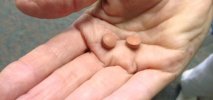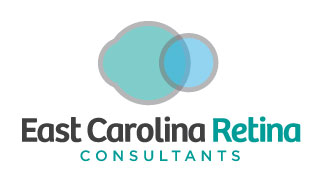New Treatment for Macular holes
Recent approval of Jetrea (Ocriplasmin) to treat symptomatic VMA (Vitreo Macular Adhesion) has opened up a new era in non surgical management of macular holes. Previously only a hospital based surgery was able to reverse the process of macular hole development but now a new drug can be injected into the eye painlessly in the office and within a few weeks the process reverses back to more normal vision levels.... more
FDA Approves ASRS Leader's ArgusŪ II Artificial Retina
On February 14, the FDA approved the Argus II artificial retina developed by ASRS Executive Committee and Board Member Mark S. Humayun, MD, PhD.
This breakthrough technology is the first ever to offer limited vision to patients with late-stage retinitis pigmentosa (RP).
Second Sight Medical Products (Sylmar, CA) manufactures the Argus II implant, which has 60 electrodes and a tiny camera mounted on eyeglasses to capture images.
The FDA approved Argus II for adults age 25 years or older with severe to profound RP. About 10,000 to 15,000 of the 100,000 Americans with RP will qualify for Argus II. Up to 4,000 patients a year can be treated with the device.
Macular degeneration and Aspirin?

Aspirin and Macular degeneration... is there an increase in the wet form of macular degeneration in those patients taking aspirin? The wet form develops quicker than the dry form. It may only be related to the fact that you are more likely to take aspirin if you have medical problems like stroke or heart attacks in the past and these conditions are more commonly associated with wet age related macular degeneration. ... more

Cryotherapy
Overview:
Cryotherapy, or the therapeutic use of cold is utilized by the physicians at East Carolina Retina Consultants to effectively treat retina holes, tears and vitreous hemorrhage. Often used in conjunction with other procedures, cryotherapy is less invasive than many traditional surgeries , and thereby carries a reduced risk of complications.
Process:
Cryotherapy is performed at East Carolina Retina Consultants, in an exam room under dim lighting. Cryotherapy does not require fasting prior to treatment. Before the procedure, you will be given a numbing shot near your eye that will last for 2-8 hours, and your eyes will be dilated. During the treatment, which can last a few minutes to an hour, a very cold probe cooled by nitrous oxide gas is applied to the outside of the eye. The targeted cold passes through the thin eye wall to the retina, freezing off areas around a tear or hole. The scar tissue created by the freeze will then gradually re-attach the retinal layers. Cryotherapy can also help seal off leaky, abnormal blood vessels that contribute to a vitreous hemorrhage and stop the formation of these vessels that is common in patients with proliferative diabetic retinopathy. For patients with rubeotic glaucoma, cryotherapy can prevent the formation of abnormal blood vessels on the front of the eye.
Following treatment, you can return home with a patch over the affected eye. You will not be able to drive, so arrange for transportation from our office. Your physician will give you a prescription for pain medication that can be taken every 4-6 hours, and you may be given steroid drops for your eye to reduce the redness and swelling that is common. A warm compress applied four times a day for 10 minutes each time can recover the eye faster and usually soothes the sore eye. Further care instructions will be given from your physician along with any mobility restrictions.
Benefits:
- In-office procedure typically lasting less than an hour
- Less invasive treatment reduces risk of infection, bleeding and pain
- Effective in preventing further damage to the eye
Risks:
- Possible damage to healthy tissue of the eye
- Best vision may not return until months after surgery
- Some vision loss is possible, depending of the severity of the condition






